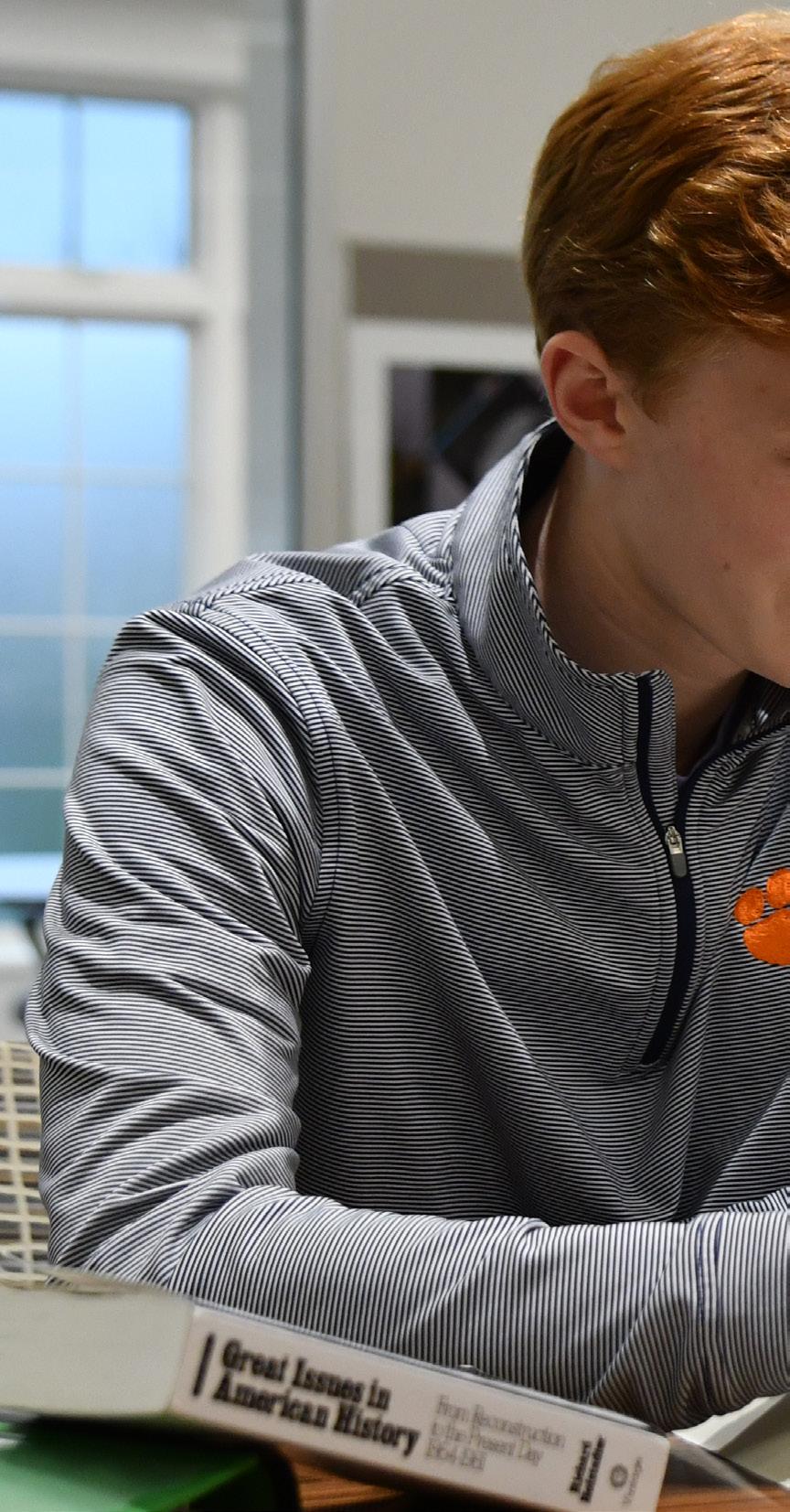
4 minute read
WILL CIRRITO ‘21, CECE FAINBERG ‘21, MAYA NOBOA ‘21
Going Big on Retrieval Practice
WILL CIRRITO ‘21, CECE FAINBERG ‘21 AND MAYA NOBOA ‘21
It was a boring Monday night in late May, and the three of us wanted to hang out after school. Our parents only agreed on one condition: that we would be productive and study for our up- coming exams. We explained that although our final exams were drawing near, we felt that we had studied for each one as best as we could, using the exam review resources and guidelines provided to us by our teach- ers. But what more could we do? In order to appease our parents, we had to figure out a study strategy that would be useful and effective; and to appease us, one that was also engaging, and enjoyable. Qui- zlet, flashcards, self-testing, and referring back to class notes were all fine strategies, but we wanted to create one that would help us fully grasp all of the information needed for our final exams, as well as one that fit where we were mentally having already done a lot of studying.
First, we had to pick a subject. We all had history class together, so we felt that it would be the wisest decision to choose that course. Next, we had to collaborate to create an incredible, impeccable method for studying and learning the material – but whatever would we choose?
Maya mentioned that she had a large scroll of paper in her basement. Cece got excited because she happened to have some nice markers. Will posed the question of what we could create with this perfect storm of blank canvas and colored markers.
Eureka! The “colossal piece of paper” was born and we set off to create our study tool. We started by writing down historical words we needed to remember. We then recalled and wrote down the first 16 presidents of the United States. Next, we
worked to recall from memory, and then by looking at our notes, the three historical chains of causation and the 22 Terms of the Historian. After that, we decided to make a table showcasing wars, from the French-Indian War to the Civil War, and important information about them. We proceeded to list the acts and compromises
in chronological order from the “Great Compromise” to the Compromise of 1850.
This technique for studying helped us tremendously on the final exam. As Dr. Kelleher , the CTTL’s Head of Research has suggested, we learned more when we made ourselves think hard. It also validated the idea that studying for a test or exam is, as our teacher, Mr. Whitman, often said, a “learning opportunity (LOPP).” It helped Will remember the presidents, a topic he struggled with all year. Cece benefited from writing down lists of terms we needed to know. Maya, who struggled with remembering dates of the acts and compromises, was able to recall them during the exam. strategies — spacing effect, retrieval practice, self-testing — should be part of every student’s study strategy tool kit, to be used when needed.
Our colossal retrieval practice project helped us learn a great deal about our learning, as well as the material covered in our history class. Memory and recall strategies were introduced to us at various points in the year by our teachers in order to help us prepare for tests and other LOPPs. The act of having frequent recall tests, that counted for few or no points, were a common feature in many classes. And our teachers routinely used different teaching methods in class to help us remember the information. All of information for the short term and for the future, and a mindset to figure out an effective strategy that was going to work for us.
Each of us — Maya, Cece, and Will — have different strengths in the way that we learn. Through this study experience, we learned that pooling our collective strengths can help us to collectively prepare for an exam while also having fun working hard with our friends. We did not do equally well on this 10th grade history final exam, but months after the exam we are still each able to recall much of what we spent retrieving that night.
It was also validating to see this way of studying reinforced by Dr. Pooja Agawal and Patrice Bain in their book, “Powerful Teaching: Unleashing the Science of Learning.” 1 Maya experienced this firsthand during her experience in 2019 as an intern for the CTTL’s Science of Teaching and Leadership Academy. The book’s

this helped us gain the skills to use more active study strategies beyond the typical flashcards. Finding an active study strategy that works for you for this material was a common theme of our classes. Thus, when we faced the most comprehensive and stressful exam of the year, we had strategy options to help us remember the
Will Cirrito, Cece Fainberg and Maya Noboa are members of the Class of 2021 at St. Andrew’s.










